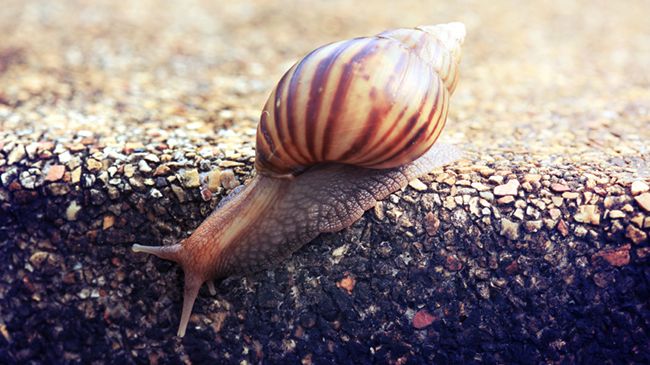Beauty is big business and despite what many think, beauty encompasses more than just your face. Hair is a massive part of beauty and oftentimes ingredients in beauty products for our face and body are beneficial for our tresses. We hear about amazing ingredients that can do almost everything from strengthening to imparting shine. From the fairly common to the strange or to the downright weird, our world has many plants that aid in keeping our tresses gorgeous and healthy.
One of the weirdest and most secretive hair care ingredients has been kept quiet by women from the Caribbean. For generations snail slime has been used for skin and scalp ailments while also keeping hair in pristine condition. You may look at a pesky and slow moving member of the Mollusca family and cringe but if you knew just how amazing their slime was you would think twice about it.
It is not the snail itself that has been the secret weapon for gorgeous hair but rather its enriching slime. Yes, the Dominican hair secret is none other than snail slime with its regenerative properties that are great for treating acne, fighting wrinkles, scar removal along while aiding irritations, burns, stretch marks, and healing wounds. The mucus that snails excrete is called Helix Aspersa Müller Glycoconjugates that is supposed to contain proteins, antioxidants and hyaluronic acid, which help to retain moisture in skin and hair. According to cosmetic chemist Randy Schueller, “Chemically speaking, snail slime is a complex mixture of proteoglycans, glycosaminoglycans, glycoprotein enzymes, hyaluronic acid, copper peptides, antimicrobial peptides and trace elements including copper, zinc, and iron.”
There has been a surge of snail slime in cosmetics and the substance even has an International Nomenclature of Cosmetic Ingredients code, which means it is registered on the international list of cosmetic ingredients as snail secretion filtrate (SSF”>. Snail slime is big business and there are even women getting snail facials where a therapist places snails on a client’s face and let the roam around the face freely. The snails leave behind a trail of mucus slime that is packed with glycolic acid and elastin, which also protects the snail from cuts, bacteria, and UV rays.
Here are a few reasons snail slime is making its way into cosmetics:
Curl booster
Snail slime is actually a blend of two types of mucus where one is more watery and acts like a lubricant while the other is more viscous and elastic. Together they behave like an adhesive. The second mucus acts as a natural gel and can aid individual curls fibers to meld together into more defined curls.
Natural detangler
With the highly fluid translucent secretion, the watery slime is a natural lubricant that applies smoothly. This allows your fingers, brushes, and even combs to slide through when hair is coated in the slime, which makes detangling sessions shorter and decreases breakage.
Moisture sealer
The snail uses its mucus to keep its delicate surface hydrated. Its slime or extract is over 90% water blended with natural proteins and other polymers that make it highly hygroscopic. This can have a hydrating effect on your hair and helps to seal in the moisture.
Hair protector
With the mix of proteins, enzymes, antimicrobial peptides, and trace elements, this natural gel performs as a natural protective layer to your tresses by cushioning and shielding your strands from the UV rays. This is a big reason why Dominicans use it to shields their skin and hair from the rays of the beaming sun. The extract also protects your strands from day-to-day styling.
Smoother
No surprise on this benefit, as the snail’s slime encases strands in a smooth, sealing layer, filling in cracks, and smoothing over rough sections of the hair. Hair feels silkier, smoother, and softer.
Glosser
Many curlies complain about hair not giving off a glossy look like our straighter sisters but with snail slime will smooth your cuticle to reflect light better giving it gleam and shininess.

